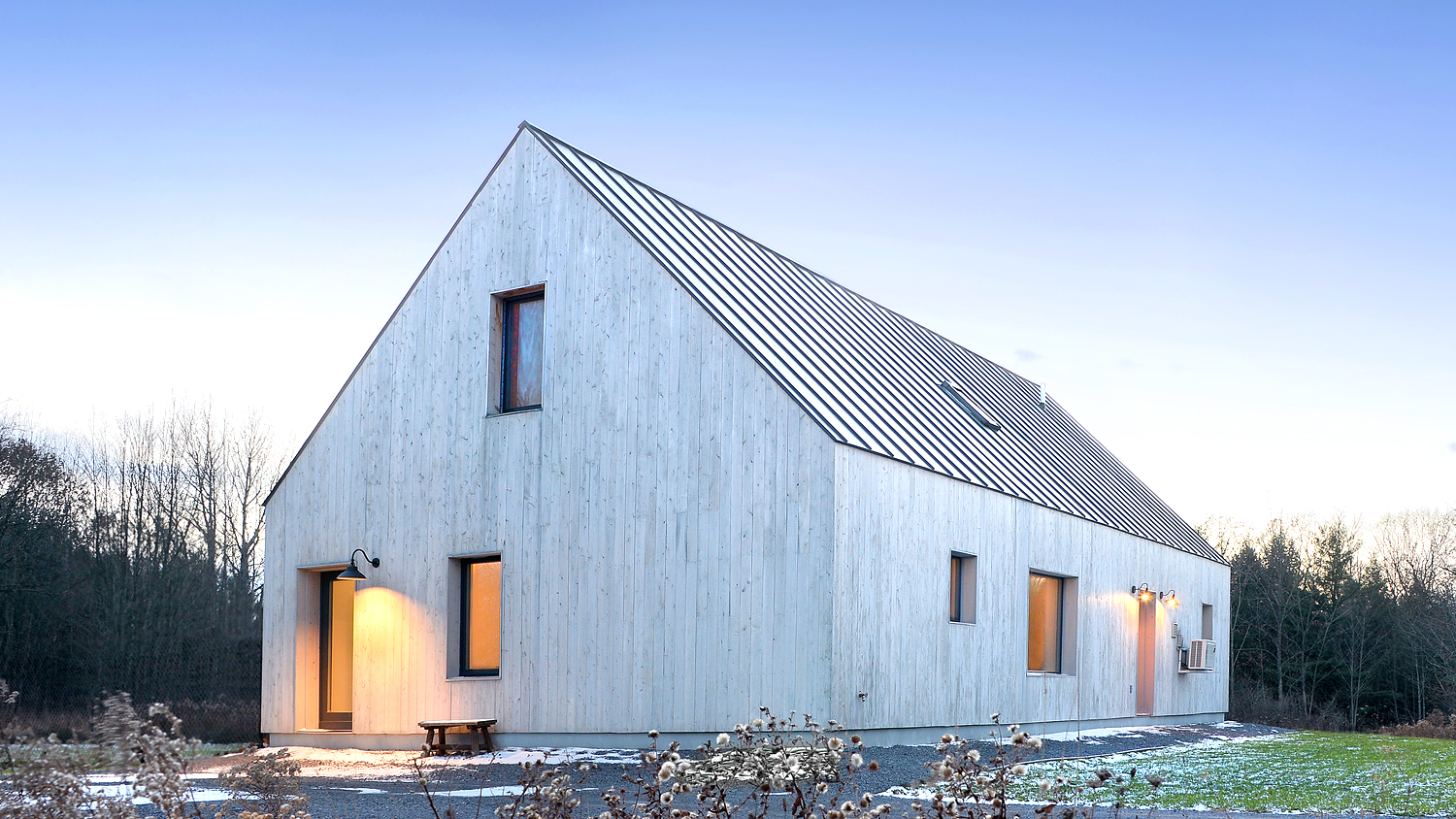News

These Prefab Passive Houses Can Reduce Energy Use by 90 Percent
An architecture firm and a construction firm team up to provide affordable eco-friendly pre-made homes.
 It seems like everywhere you look these days you see homes covered with solar panels. If Tesla’s recent announcement about solar roof tiles is any indicator, this trend is here to stay. While moving to renewable energy is great, designing a house “from the ground up” that naturally consumes far less energy is an even better choice. Welcome to ‘Passive Houses.’
It seems like everywhere you look these days you see homes covered with solar panels. If Tesla’s recent announcement about solar roof tiles is any indicator, this trend is here to stay. While moving to renewable energy is great, designing a house “from the ground up” that naturally consumes far less energy is an even better choice. Welcome to ‘Passive Houses.’
Passive House principles solve many of the deficiencies of the modern American home while creating a healthier and more comfortable living environment. Regardless of the weather outside, Passive Houses reduce energy consumption by up to 90% compared with conventional homes. Depending on location, the size of the home and season, this translates into as much as $1,000 savings per month.
Beyond the cost savings, Passive Houses are also desirable because of their consistent indoor temperature — 68 to 72 degrees –all year-round and in all rooms. With fully half of American home owners reporting that they struggle to feel warm inside their homes no matter what the thermostat says, this last point is a big seller. Passive Houses eliminate drafty windows, cold walls, and other inefficient construction defects that contribute to discomfort in cold months.
The Prefab Passive Home
Richard Pedranti Architect (RPA), a full-service architecture firm focusing on sustainable and Passive House design, and Ecocor, a construction firm that manufactures Passive house components, have teamed up to design and build the most energy efficient prefabricated homes on the market today. The price for one of their Passive Houses can range from $150,000 to $500,000 depending on the size and location of the construction. Turnkey versions of all their models are showcased online.
The partnerships first prefabricated Passive House was assembled this spring in Altamont, NY. RPA and Ecocor announced their partnership last summer and started assembly in March. The owner, Elizabeth Scott, worked closely with RPA to customize her own version of the Goldenrod Model Home from the Solsken Line of Prefabricated Passive Houses.
The process for making these homes is as unique as the product itself. Once designed, RPA’s computerized building models automatically provided instructions to the Randek AB saw and production line inside the Ecocor facility, which created the panelized wall and roof components.
Once fabricated, the components are loaded onto trucks and delivered to the site. Ecocor’s team uses a crane to “fly-in” the wall and roof components before additional team members assemble the panels and do the finishing. From my understanding, it’s like building with Magna-Tiles instead of Legos, which makes it both fast and easy to replicate.
This design is a new and exciting solution to housing for the 21st century. It’s smarter, more flexible, and more practical. Rather than rebuilding old models dating back 50 years in construction technology, a prefab Passive House provides a simpler, cheaper and greener housing experience. Looks like this is a new idea that’s here to stay!
See this article on https://www.inc.com/kate-l-harrison/these-prefab-passive-houses-can-reduce-energy-use-by-90-percent.html?cid=search







